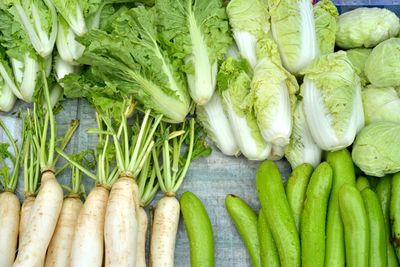As a gardener, the names of Asian vegetable plants were conspicuously absent from my catalogs. Then, low and behold, two things happened; the ethnic Asian population grew and the rest of us became more health conscious, seeking more variety in our vegetables. Hurray for me! Today, Asian style vegetables are everywhere. Originating in East and Southeast Asia, these vegetables are finally available to the general population. For gardeners, the possibilities are endless. Asian root vegetables abound and yes, green, leafy vegetables too. Our home gardens can yield a much wider variety than is available in the produce section of your local store. Of course, with these new growing opportunities, questions arise about the names of vegetable plants and Asian vegetable care.
How to Care for Asian Style Vegetables
While the names of Asian vegetable plants may seem exotic, most are merely different subspecies of their western counterparts and Asian vegetable care requires no more effort. An Asian root vegetable requires growing conditions similar to the radishes, beets and turnips you grow every year. There are cucurbits like your cucumbers and squash, crucifers or cole crops like cabbage and broccoli, and legumes. To help you make your choices, the following is a basic guide to Asian vegetables.
Guide to Asian Vegetables
Please be aware that following guide to Asian vegetables is in no way complete and is only meant to encourage newcomers. I’ve used the most common names of Asian vegetable plants to make your selection easier.
Asian Squash – There are too many to mention here. Suffice it to say, most are grown like the summer and winter varieties and are cooked the same way. Asian Eggplant – Smaller than the eggplant you may be used to, these are grown the same way. They can be used in tempura, stir-fry, or stuffing and baking. They’re sweet and delicious and should be cooked with their skins on. Asparagus or Yardlong bean – A long trailing vine closely related to the black-eyed pea and should be grown on trellises. As the name implies, it is a long bean and comes in light or dark green and red. While the dark colors are more popular, the light green is generally sweeter and more tender. The beans are cut in two inch (5 cm.) pieces and used in stir-fries. Chinese Broccoli – The leafy stalks and tops are harvested right before the white flowers blossom. While it is a perennial, grow it as an annual. The results will be more tender and flavorful. Chinese Cabbage – There are two main forms of Chinese cabbage: Napa cabbage, a broadleaf, compact heading type and bok choy, whose smooth dark green leaves form a celery-like cluster. It’s slightly spicy to the taste. They are cool season crops and are grown like lettuce or cabbage, though the flavor is more delicate. Daikon Radish – Related to the common radish, this Asian root vegetable is usually planted in spring and fall. Daikon radishes are large roots that enjoy soils high in organic matter. Edamame – Edible soybean is grown as a vegetable. The bean is moisture sensitive and should not be overwatered while germinating. The beans should be harvested while still green and plump. All the pods from a single plant should be harvested at the same time, so successive planting is recommended. Garlic Chives – Like other chives in your garden, this is a hardy perennial. Its flavor is a mild cross between onion and garlic. Use garlic chives in stir-fry or in any dish where chives are called for. Pak Choi – With succulent leaves and a mild flavor, this is a great addition to salads and soups. Growth is quick and this vegetable should be harvested young. Cabbage moths love it, so be prepared. Sugar Snap or Snow Pea – Cool season crops that should be planted in early spring when bush beans are planted. Both pods and beans are edible. Snow peas should be harvested while flat, sugar snaps when full and round. Both make wonderful raw snacks or crunchy additions to stir-fries or alone as a side dish.
More good news! For those of you who participate in local farmers markets, there is a niche in Asian style vegetables just waiting to be filled. So whether it’s for profit or simply dining adventure, try adding a few names of Asian vegetable plants to your list of things to try.
